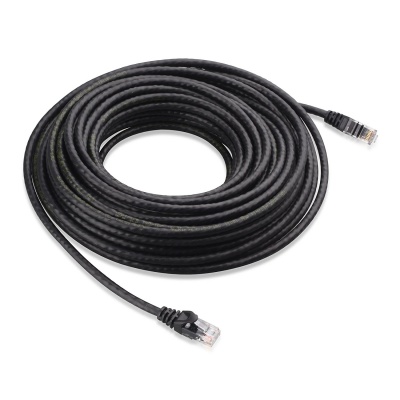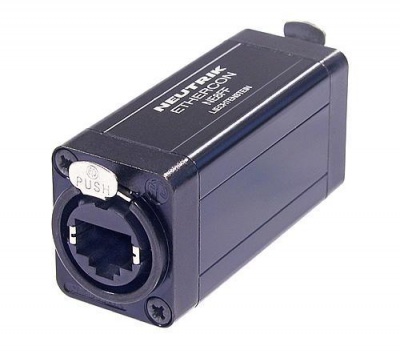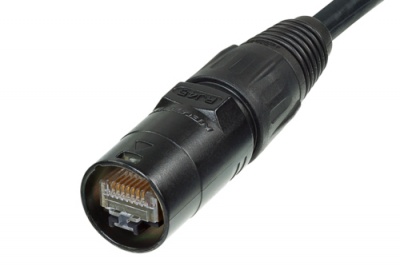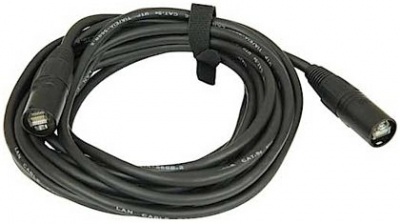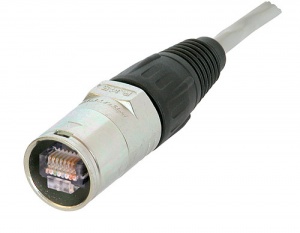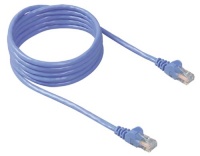Difference between revisions of "ToneMatch Power Supply Extension"
m (Replaced content with "{{ToneMatch Extension Cable|Device=ToneMatch Power Supply}}") (Tag: Replaced) |
m |
||
| (One intermediate revision by the same user not shown) | |||
| Line 1: | Line 1: | ||
| − | {{ToneMatch Extension Cable|Device=ToneMatch Power Supply}} | + | {{ToneMatch Extension Cable|Device=[[ToneMatch Power Supply]]}} |
| + | |||
| + | Instead of a CAT-5 with the [https://www.neutrik.com/en/product/ne8mc-b-1 Neutrik NE8MC-B-1 cable connector carriers] | ||
| + | |||
| + | you can use a {{:ToneMatch Cable}} | ||
Latest revision as of 02:58, 3 April 2019
If you need an extension for the ToneMatch Power Supply consider using a CAT-5 or CAT-6 cable (up to 25 feet).
You can use a Neutrik NE8FF to connect the ToneMatch Power Supply to the CAT-5 or CAT-6 cable.
etherCON RJ45 feedthrough coupler for cable extensions
You can finish the ends of the CAT-5 cable with Neutrik NE8MC-B-1 cable connector carriers.
Instead of a CAT-5 with the Neutrik NE8MC-B-1 cable connector carriers
you can use a
Contents
Overview
The Bose ToneMatch cable comes with the T4S ToneMatch mixer (and the T1 ToneMatch Audio Engine}. It is an optional accessory for the T8S ToneMatch mixer and the L1 Pro systems.
ToneMatch Cable
The T4S and T1 ToneMatch Audio Engine uses a digital connection to the L1 Pro and L1 Model 1S/L1 Model II Power Stands. This is labeled ToneMatch®. The T8S ToneMatch mixer can connect to the L1 Pro systems via the ToneMatch port, but not to the L1 Model 1S/L1 Model II.
The connecting cable has a male Ethercon connection at each end that looks like this.
CAT5 or CAT6 or CAT7 or CAT8 cable
If your ToneMatch® cable gets damaged or lost you can use a computer network cable type CAT5 or CAT6 or CAT7 or CAT8 cable. There's no compelling reason to choose higher category cables. All should work.
The T4S and T1 ToneMatch Audio Engine come with a Pro Ethercon cable, with robust metal connector shells and an almost memoryless 18' black cable.
However, in a pinch, should you forget the cable, or if say a huge Hammond B3 gets dropped on the cable and severs it, you can use and ordinary Ethernet cable and it will work fine.
Later in that discussion Hilmar-at-Bose tells us:
Any CAT5 (or CAT5e, CAT6, or CAT7 or CAT8) cable will work just fine without any degradation at least initially. The downsides are that most ethernet cables don't coil particularly well and that the connectors wear out over time. After a a few hundred uses you may notice the occasional drop out, at which point it's time to get a new one.
It's certainly a quick and cheap way to get a spare for an emergency.
- Bose recommends you do not exceed a fifty foot cable run.
Convert Cat-5/6/7/8 to Ethercon
NE8MC EtherCon® Cable Connector Carriers (retrofit over an existing RJ-45 Connector).
Example vendor http://www.fullcompass.com/product/255589.html
Cable Length
Up to 50 feet
A technical note from Bill-at-Bose [1]
A 33 or 50 footer will not cause any problems, either with the digital audio (ones and zips) or the power.
The technical reason follows, for those who are interested : A 24 gauge wire (the size typically used in ethernet cables) has about 2.5 Ohms of resistance per 100 feet. The T1 draws roughly 1/4 Amp on each of two supply wire pairs (+/-18V nominal).
For a 50 foot run, each pair of wires (made up of a plus and minus lead) totals 100 feet. A quarter Amp of current across 2.5 Ohms gives, per Ohm's law, a voltage drop of less than one volt (V=IR = 0.625 Volts). Because of the margin we built into the system, it can handle this voltage drop easily.
In fact, although we don't recommend it and can't guarantee it, the digital audio has been tested up to 100 feet in average conditions (for example, no undervoltage on the AC supply at the gig), and quite happily continued to make music.
Over 50 feet
MikeZ-at-Bose added in a later discussion:[2]
Bill at Bose stated you could run 50' of ethernet cable no problem at all. Success at distances longer than that would start to depend on outside factors, for instance the voltage of your power source.
Another option for you is to run the T1 ToneMatch Audio Engine off of the optional power supply, and then run a balanced line from the Master Out on the T1 ToneMatch Audio Engine to the balanced 'analog input' on the L1 Model II. This method would be able to transmit over a hundred feet, perhaps much more.
- ¼ Inch Tip-Ring-Sleeve (balanced) to ¼ Inch Tip-Ring-Sleeve (balanced)
A balanced connection is preferred and will provide better noise rejection over greater distances than the unbalanced connection.
- ↑ Bill-at-Bose talks about cable lengths
- ↑ MikeZ-at-Bose talks about T1 cable lengths
